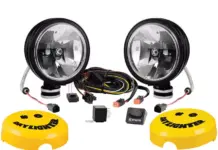Author: Wert Bryan
Date Published: Oct. 1st, 2000
Publisher: University of Southern California School of Engineering
Link: https://illumin.usc.edu/dynamics-of-car-seat-design/
The automobile, an unfathomable engineering feat at the turn of the twentieth century, is a familiar possession at the turn of the twenty-first century. But how many of us give our cars a second thought — other than when we buy gas? How often do we consider how our cars work and the engineering behind them? Furthermore how often do we wonder about the car seat and the engineering that goes into its design? We fall into them each day, buckle up and drive to work, school, or the nearest McDonald’s without giving those all-important seats a second thought. The seat must provide proper support (ergonomic design), and be comfortable and safe. Manufacturers can achieve these goals by beginning with good engineering design when considering various parts and how they are implemented to construct an automobile seat.
Parts and Assembly:
The standard car seat is designed to support thighs, the buttocks, lower and upper back, and head support. The front driver and passenger seats of most vehicles have three main parts: the seat back (squab), seat base (cushion), and the headrest. These components are usually constructed from foam to provide comfort to the rider. When choosing this product, foam manufacturers must consider the most suitable foam for balancing comfort, support, safety, and recycling properties. The cushioning agent is especially important when considering that moving cars can transmit vibrations near the human spine’s resonant frequency of 3 Hz.
The base can usually be moved forward and back on metal railings and may move up and down to adjust to different body types. This movement is accomplished either by manual latches or by electric levers. The base may also be equipped with a release lever to allow the squab to lean forward to permit access to back seats in two-door automobiles. The bottom of the squab is connected to the rear of the base and the release lever unlocks the squab from the upright position and allows for the afore-mentioned leaning. The standard base span is from the seated rear to just before the knees and the typical squab extends to the shoulders on the average height person. The head support is connected to the top of the squab by two metal circular tube shafts that are permanently attached to the head support and slide into two holes in the squab.
Comfort:
When sitting in the car seat your posture is the most important factor when considering your comfort. The positions that drivers assume depend on their anthropometric characteristics, the range and type of adjustments available in the seat package, and each driver’s preferred driving position. Common available adjustments deal with concerns such as providing legroom, supplying back support, and giving head support. Available amenities include electric adjustments, choice in fabric covering, and temperature control. Important advancements in this area are of top concern to manufacturers, government officials and, of course, consumers.
Safety:
An integral dimension to any seat design is the aspect of safety. As government regulations become more comprehensive, the design of the car seat must deal with more than just seat belts. Positioning of the occupant with respect to the steering wheel must be considered so injury is not caused by the steering wheel or air bag in a collision. Now, car manufacturers must try predict car driver size and position to enhance safety in crashes. Occupant protection systems must find information about the driver’s chosen seat position and the size of the driver especially if they are exceptionally large or small.
Engineers have gone through a series of tests to determine whether it is possible to determine driver position to boost safety. This process involves installing sensors in seats, utilizing specific CAE (computer assisted engineering) software for numerical evaluations, and experimental tools for laboratory test rigs and road tests. Test results proved it possible to determine drivers’ head and chest positions relative to potentially injurious elements such as the steering wheel and airbag; it is even possible to determine some physical dimensions of drivers. Knowing the dimensions of the driver assists the manufacturer in designing the car seat to provide the maximum possible safety as well as the utmost in ride comfort.
This article, though a bit dated, gives us a clear introductory perspective on the primary functions that engineers focus on when designing seats, particularly those for drivers. Many of the same criterion, such as comfort and safety, that are taken into consideration while working on front seats should also be considered in the back seat – especially those involving the ergonomics and positioning of the passenger. Knowing the various features of vehicle seating that engineers are focusing on will allow us to better communicate with the engineers on their team and better understand the types of things they may be focused on in comparison to what we as designers place emphasis on.
Dynamics of car seat design. USC Viterbi School of Engineering. (2017, October 26). Retrieved September 17, 2021, from https://illumin.usc.edu/dynamics-of-car-seat-design/.




